Table of Contents
- Introduction
- Editor’s Choice
- Global Non-Alcoholic Beverages Market Overview
- Popular Beverage Brands
- Demographics of Non-Alcoholic Beverage Consumers
- Non-Alcoholic Beverage Sales Statistics
- Reasons for Choosing Non-Alcoholic Beverages in The Place of Alcoholic Beverages
- Government Initiatives for Supporting Non-Alcoholic Beverages
Introduction
According to Non-alcoholic Beverages Statistics, Non-alcoholic beverages encompass a diverse range of beverages devoid of alcohol, including soft drinks, water, fruit juices, health drinks, tea, coffee, and dairy-based options.
This market is notable and expanding due to the growing health awareness and shifts in consumer preferences. Leading companies like Coca-Cola and PepsiCo hold sway in this industry, providing extensive offerings and engaging in competition through innovation and brand recognition.
Consumers’ increasing preference for healthier choices propels the demand for beverages containing natural ingredients and offering functional benefits. It is crucial to adhere to regulations to maintain the safety of products and foster trust among consumers.
Editor’s Choice
- The global non-alcoholic beverages market revenue will reach 2,135 billion in 2033.
- Among competitors, PepsiCo stands out with an impressive 18% market share, closely followed by Unilever at 15% and The Coca-Cola Company at 14%.
- The United States emerged as the frontrunner in 2022, boasting a commanding market revenue of USD 447.35 billion, underpinned by high consumer spending power, a vast population, and a strong culture of beverage consumption.
- Dole leads the pack with an impressive 76% popularity rating in beverages.
- According to NielsenIQ, the purchase of low and no-alcohol (LNA) beverages was reported in less than 5% of households, constituting 3.5% of the total alcohol market share.
- Millennials and Generation X exhibit a greater inclination towards non-alcoholic beverages due to their pursuit of healthier lifestyles, with 41% and 54% respectively citing this as a motivating factor.
- The World Health Organization (WHO) urges alcohol producers and retailers to prioritize no-alcohol and lower-alcohol products in their portfolios to reduce overall alcohol consumption.
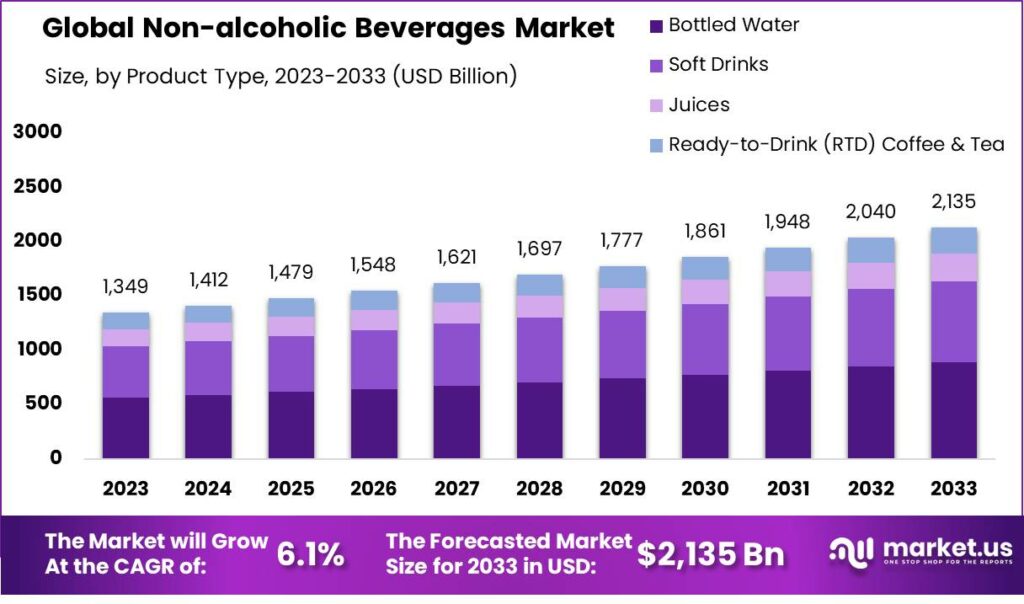
Global Non-Alcoholic Beverages Market Overview
Global Non-Alcoholic Beverages Market Size
- The global non-alcoholic beverages market is exhibiting steady growth at a CAGR of 6.1%, with revenue reaching USD 1,349 billion in 2023 and showing a consistent upward trajectory over the forecast period.
- By 2030, the market is anticipated to surpass USD 1,861 billion and continue to climb, reaching USD 1,948 billion in 2031 and USD 2,040 billion in 2032.
- Furthermore, the market revenue is forecasted to reach 2,135 billion in 2033.
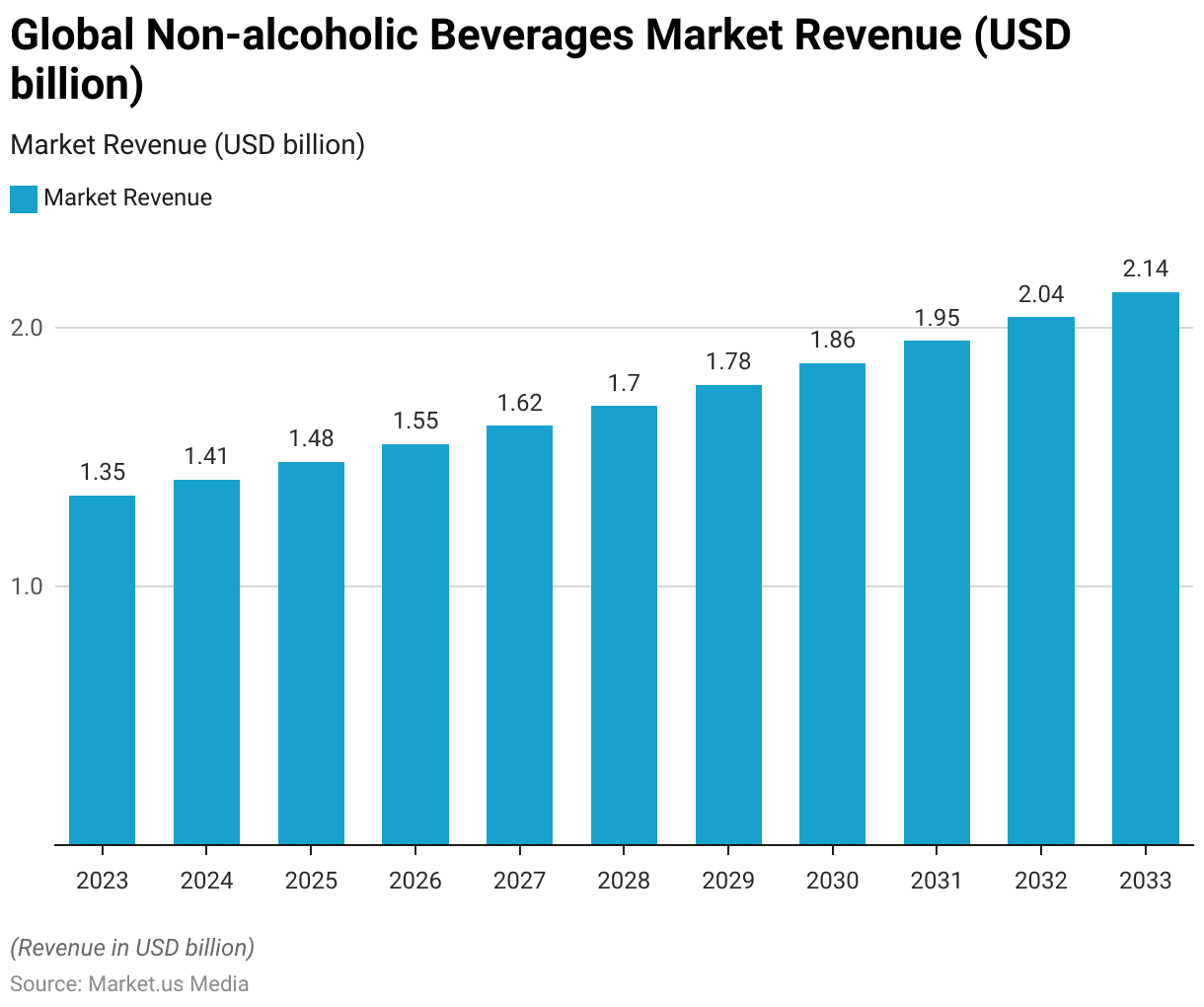
Key Players in the Global Non-Alcoholic Beverages Market
- The non-alcoholic beverages market is dominated by several key players, each vying for a significant share of consumer preference and market revenue.
- Among these competitors, PepsiCo stands out with an impressive 18% market share, followed by Unilever at 15% and The Coca-Cola Company at 14%.
- Nestlé and Cott Corporation each command a respectable 10% share, while Danone S.A. holds 9%.
- Keurig Dr. Pepper Inc. and Walvax Biotechnology Co., Ltd. contribute 8% and 7%, respectively.
- Other key players collectively hold a 9% share, indicative of a diverse and competitive landscape within the non-alcoholic beverages industry.
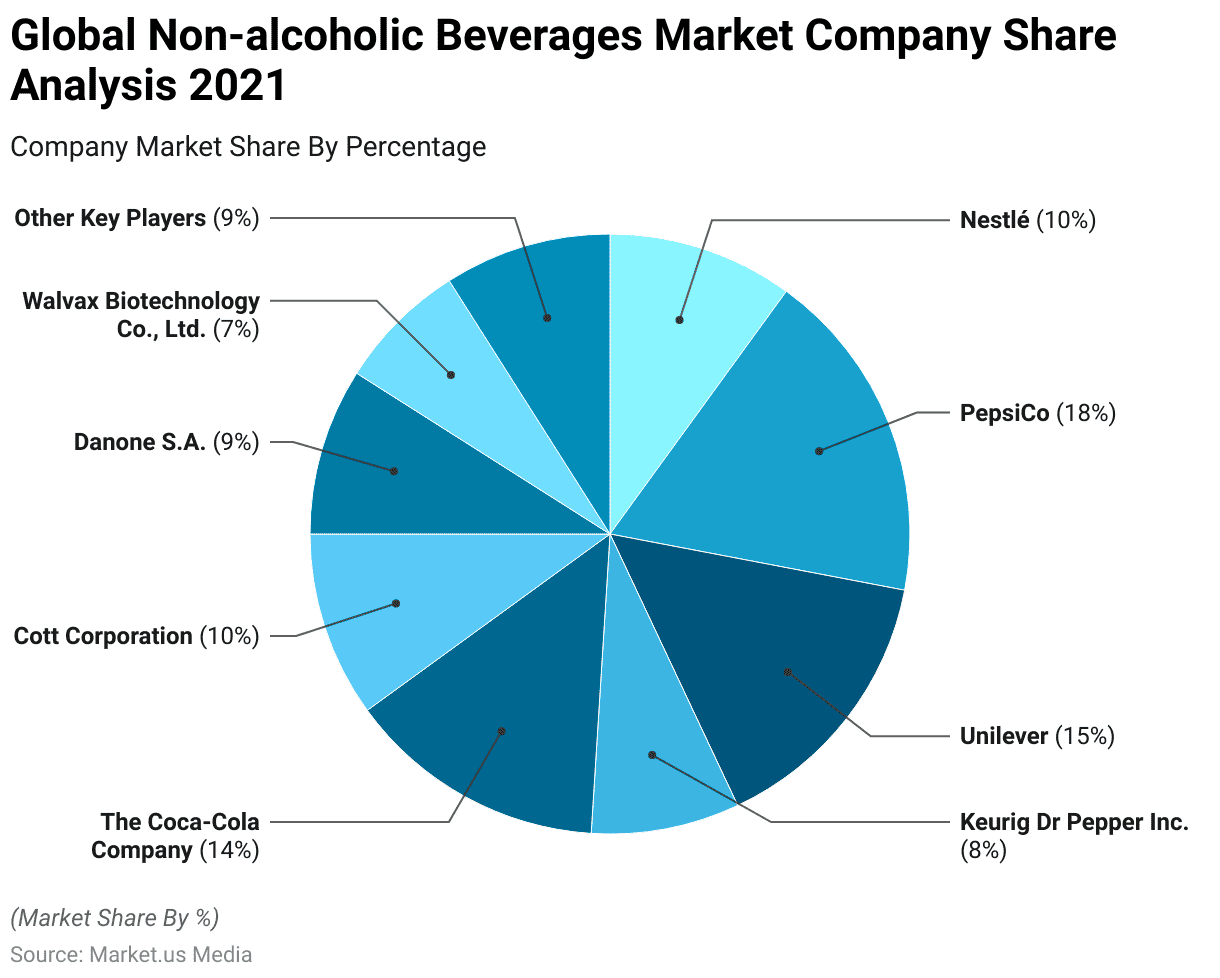
Global Non-Alcoholic Beverages Market Revenue – By Country
- In 2022, the global non-alcoholic drinks market exhibited substantial revenue figures across various countries, reflecting diverse consumer preferences and economic landscapes.
- The United States emerged as the frontrunner, boasting a commanding market revenue of USD 447.35 billion, underpinned by high consumer spending power, a vast population, and a strong culture of beverage consumption.
- China, the world’s most populous nation, followed closely with a significant revenue of USD 135.86 billion, driven by rapid urbanization, increasing disposable incomes, and a growing health and wellness awareness.
- Japan and Germany, renowned for their advanced beverage industries and sophisticated consumer markets, contributed USD 68.63 billion and USD 53.77 billion, respectively, reflecting a blend of tradition and innovation in beverage consumption.
- The United Kingdom, Mexico, and Nigeria each surpassed the USD 30 billion mark, underscoring the global reach of non-alcoholic beverages and the emergence of diverse consumer preferences across different regions.
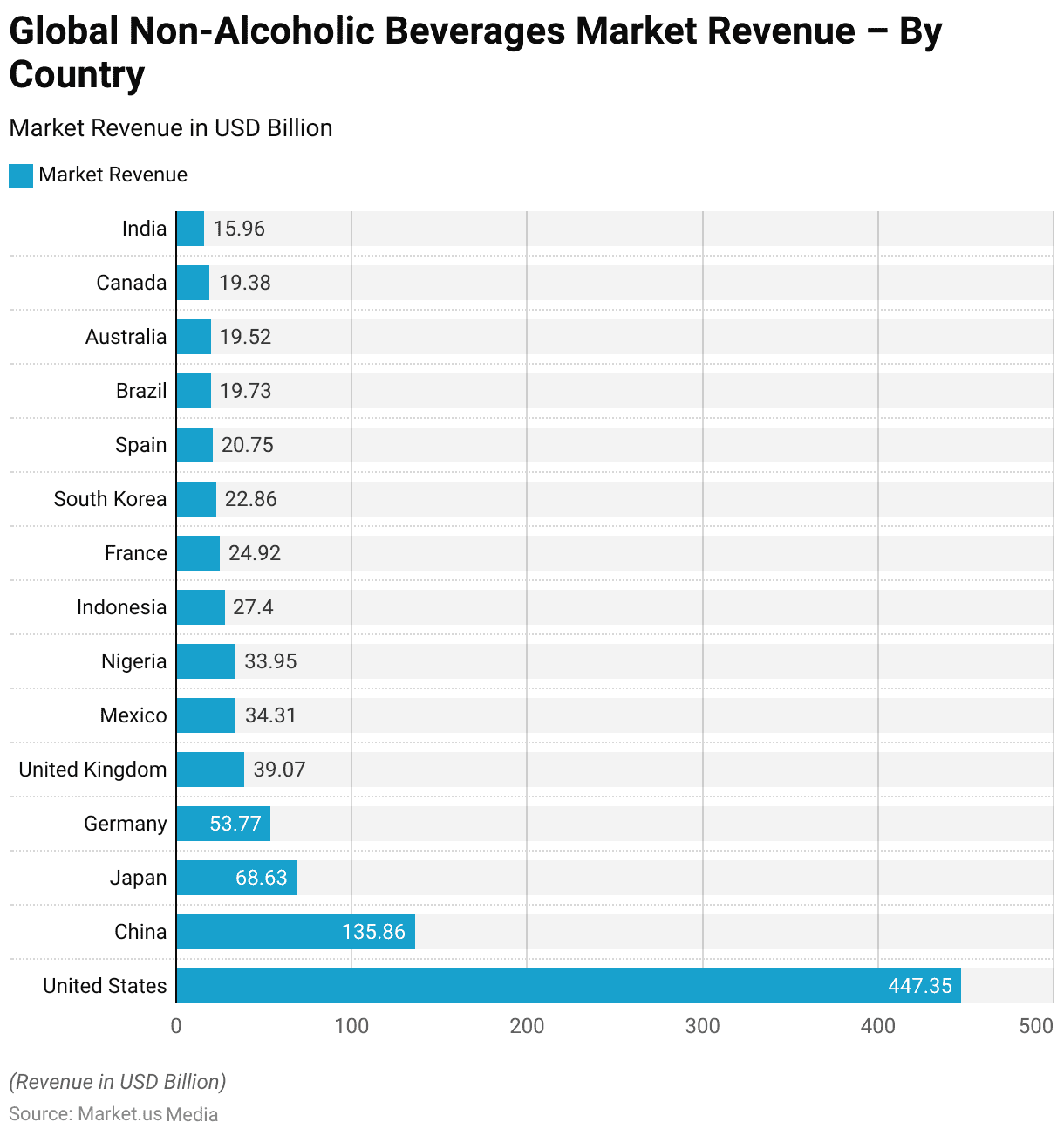
Popular Beverage Brands
- Several brands stand out for their widespread popularity among consumers in beverages.
- Dole leads the pack with an impressive 76% popularity rating, closely followed by iconic names like Coca-Cola and Welch’s, each commanding a sizable share of consumer preference at 75% and 73%, respectively.
- Minute Maid, Lipton, and Tropicana share the spotlight with a popularity rating of 72%, highlighting the strong appeal of their products in the market.
- Other renowned brands, such as 7-Up, Ocean Spray, and Sprite, maintain a significant presence with popularity ratings of 71%.
- Lipton Ice Tea also enjoys considerable favourability with a 70% rating, alongside Canada Dry, Del Monte, and Gatorade, each garnering a respectable 69% popularity rating.
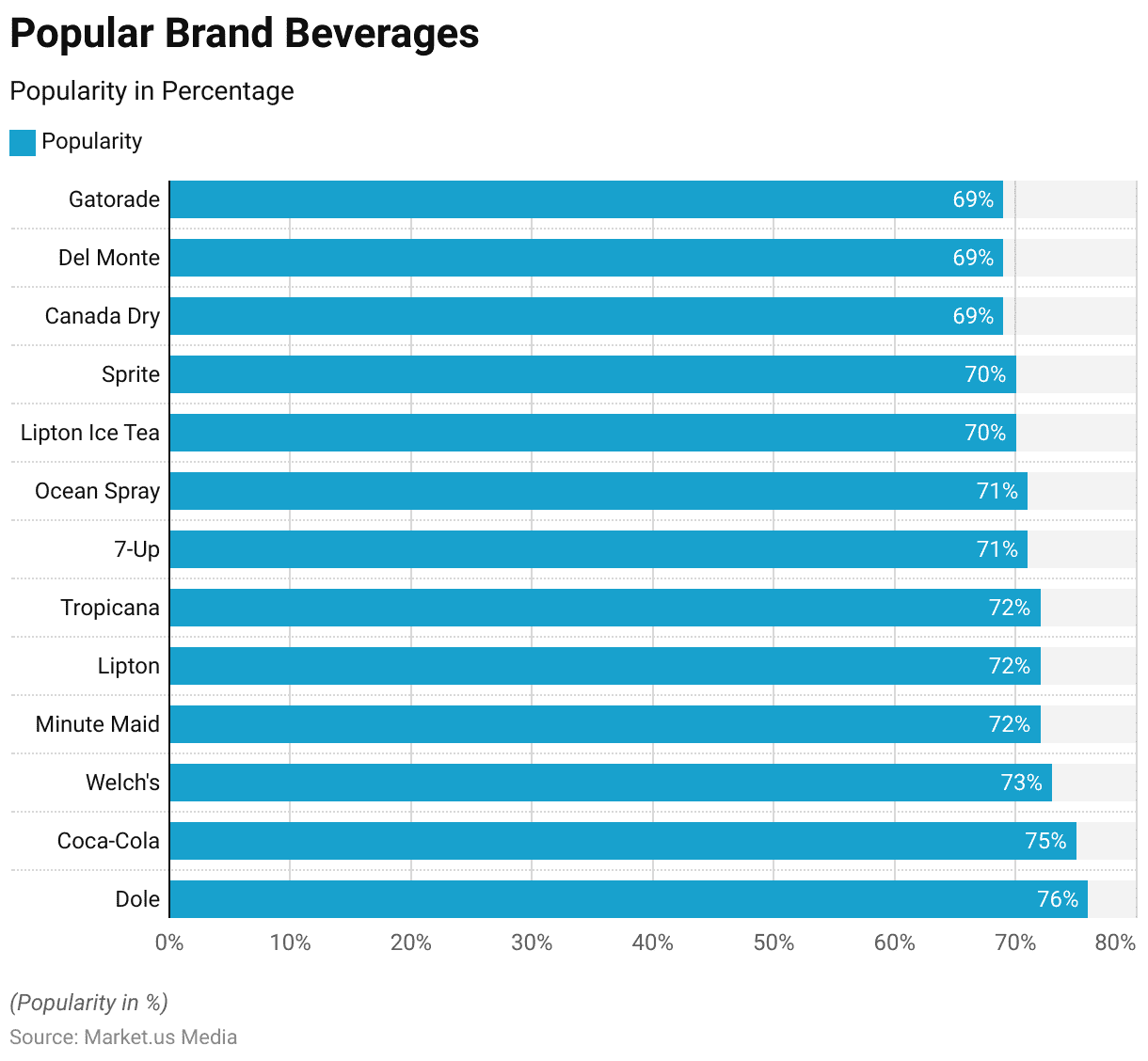
Demographics of Non-Alcoholic Beverage Consumers
According to Age
- Total non-alcoholic beverage consumption in the United States between 2015 and 2018 varied significantly across different age groups, revealing distinct preferences and trends.
- Among individuals aged 20-39, water emerged as the most consumed beverage, representing a substantial portion at 56.5%, followed by coffee at 9.2% and tea at 6.7%.
- Sweetened and fruit beverages also contributed significantly, with 13.5% and 6.5% respectively.
- In the 40-59 age group, coffee consumption notably increased to 16.1%, surpassing tea and becoming the second most consumed beverage after water, which remained the dominant choice at 49.3%.
- Sweetened beverages, fruit beverages, and milk maintained relatively stable consumption levels.
- Interestingly, as individuals aged 60 and over, there was a notable shift towards coffee and tea, with coffee consumption reaching 20.5% and tea at 10.3%, reflecting perhaps a preference for warm beverages among older demographics.
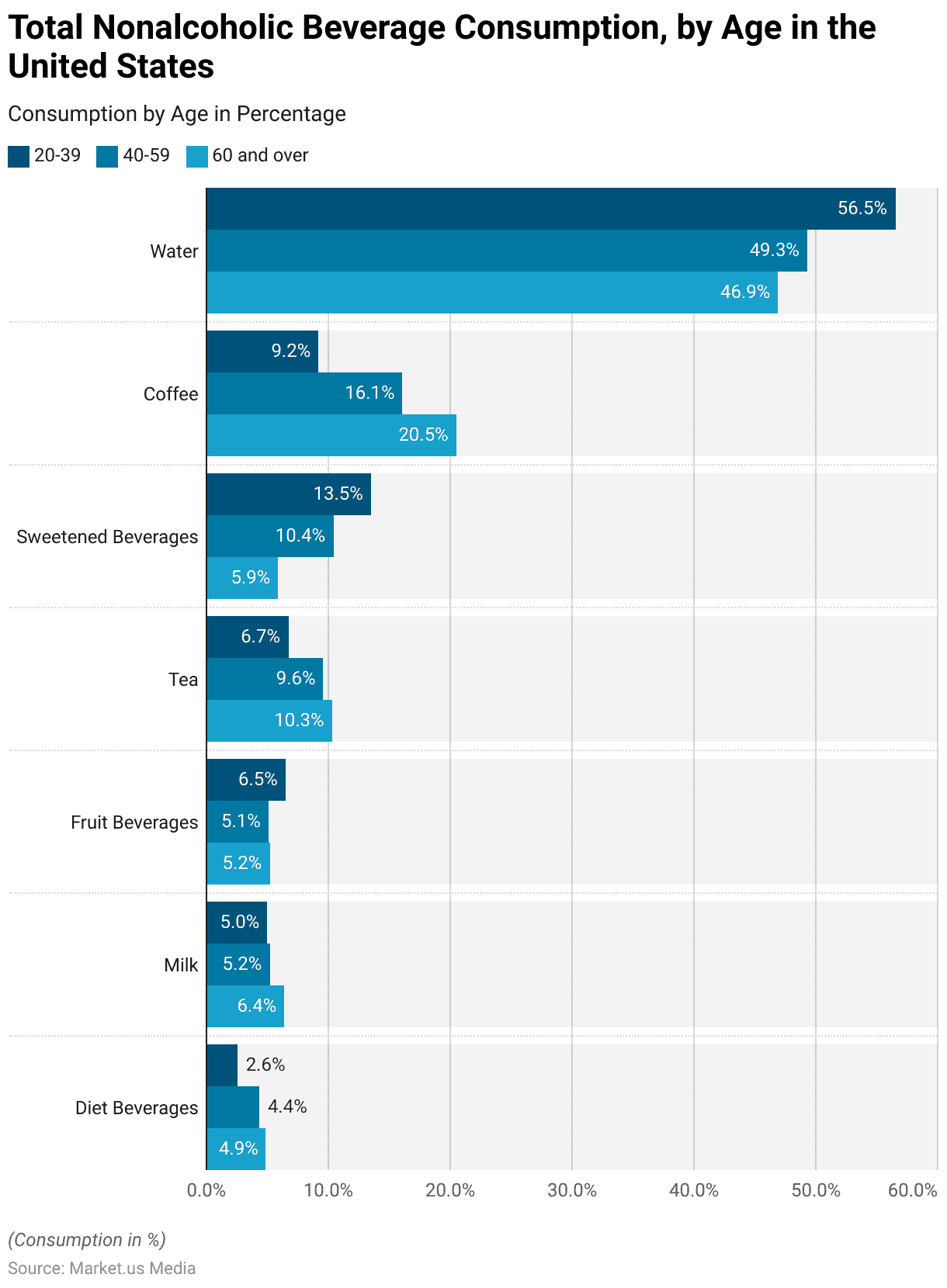
Gender-wise Preferences for Non-Alcoholic Beverages
- Non-alcoholic beverage consumption patterns in the United States between 2015 and 2018 exhibited notable differences between genders, shedding light on distinct preferences among men and women.
- Among men, coffee emerged as the most consumed beverage, representing a significant portion at 16%, followed closely by water at 48.2%.
- Tea and sweetened beverages also garnered notable consumption rates at 7.8% and 11.8%, respectively.
- In contrast, women preferred water, with 54% reporting it as their beverage, followed by coffee at 13.9%.
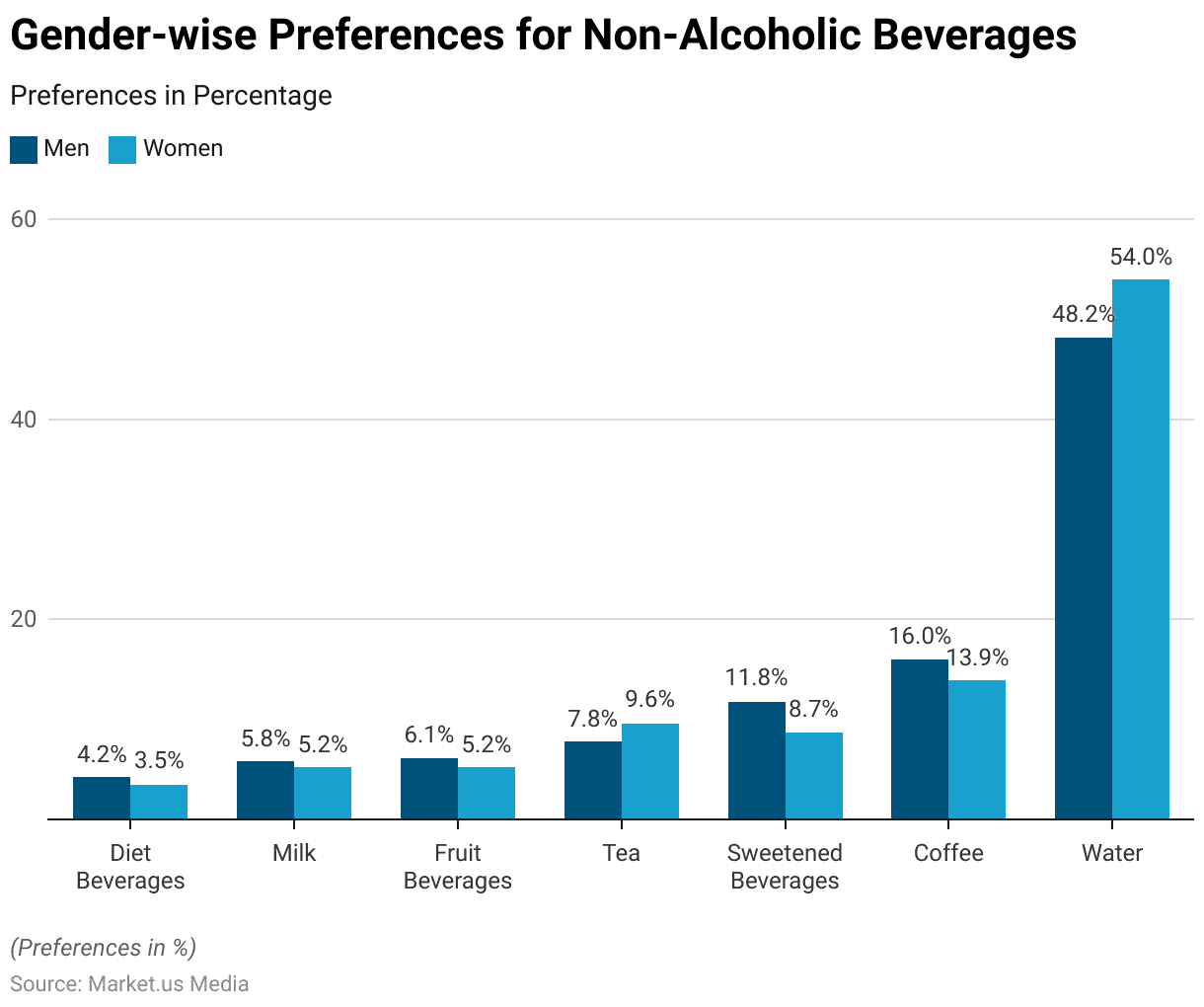
Non-Alcoholic Beverage Sales Statistics
- According to NielsenIQ, the purchase of low and no-alcohol (LNA) beverages was reported in less than 5% of households, constituting 3.5% of the total alcohol market share.
- The NielsenIQ BASES report indicated a significant increase in product introductions, with 15 times the number of non-alcohol launches tested in 2021 compared to 2020.
- Over 52 weeks ending in late October 2021, sales of non-alcoholic beverages surged by 33%, while low-alcoholic beverage sales saw an 8% increase.
- Online sales of LNA beverages experienced a remarkable 315% growth between October 2020 and 2021, significantly outpacing the 26% increase in sales of alcoholic options.
- NielsenIQ researchers noted that purchasing non-alcoholic beverages wasn’t an exclusive choice, as 78% of those buying non-alcoholic beverages also purchased alcoholic options like beer, wine, and spirits.
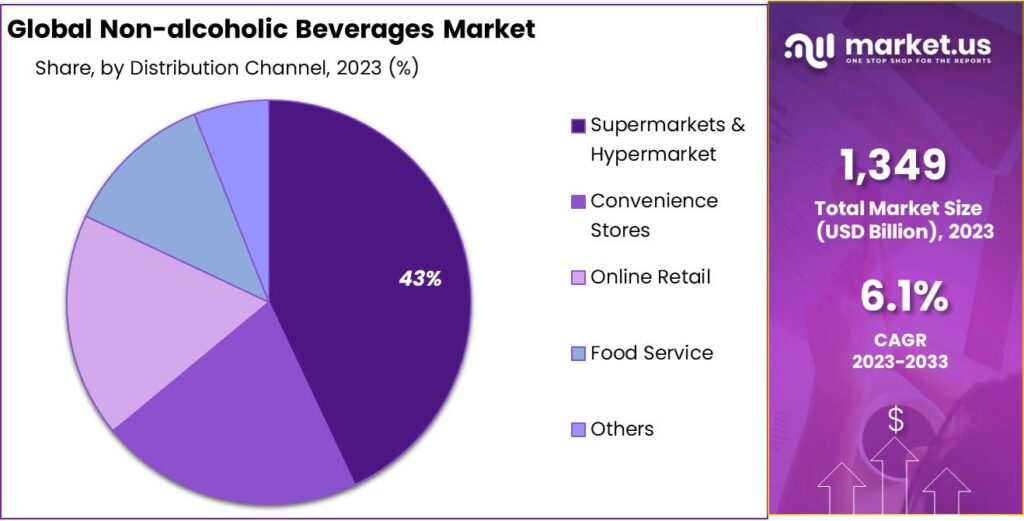
Reasons for Choosing Non-Alcoholic Beverages in The Place of Alcoholic Beverages
- Various factors across different age demographics drive the decision to consume more non-alcoholic beverages instead of alcoholic ones.
- Among Generation Z, Millennials, Generation X, and Baby Boomers, preferences vary but commonly include taste preference, health considerations, and efforts to reduce alcohol intake.
- Millennials and Generation X exhibit a greater inclination towards non-alcoholic beverages due to their pursuit of healthier lifestyles, with 41% and 54% respectively citing this as a motivating factor.
- Meanwhile, Generation X and Baby Boomers are more likely to opt for non-alcoholic beverages for their taste, with 44% and 22% indicating this preference, respectively.
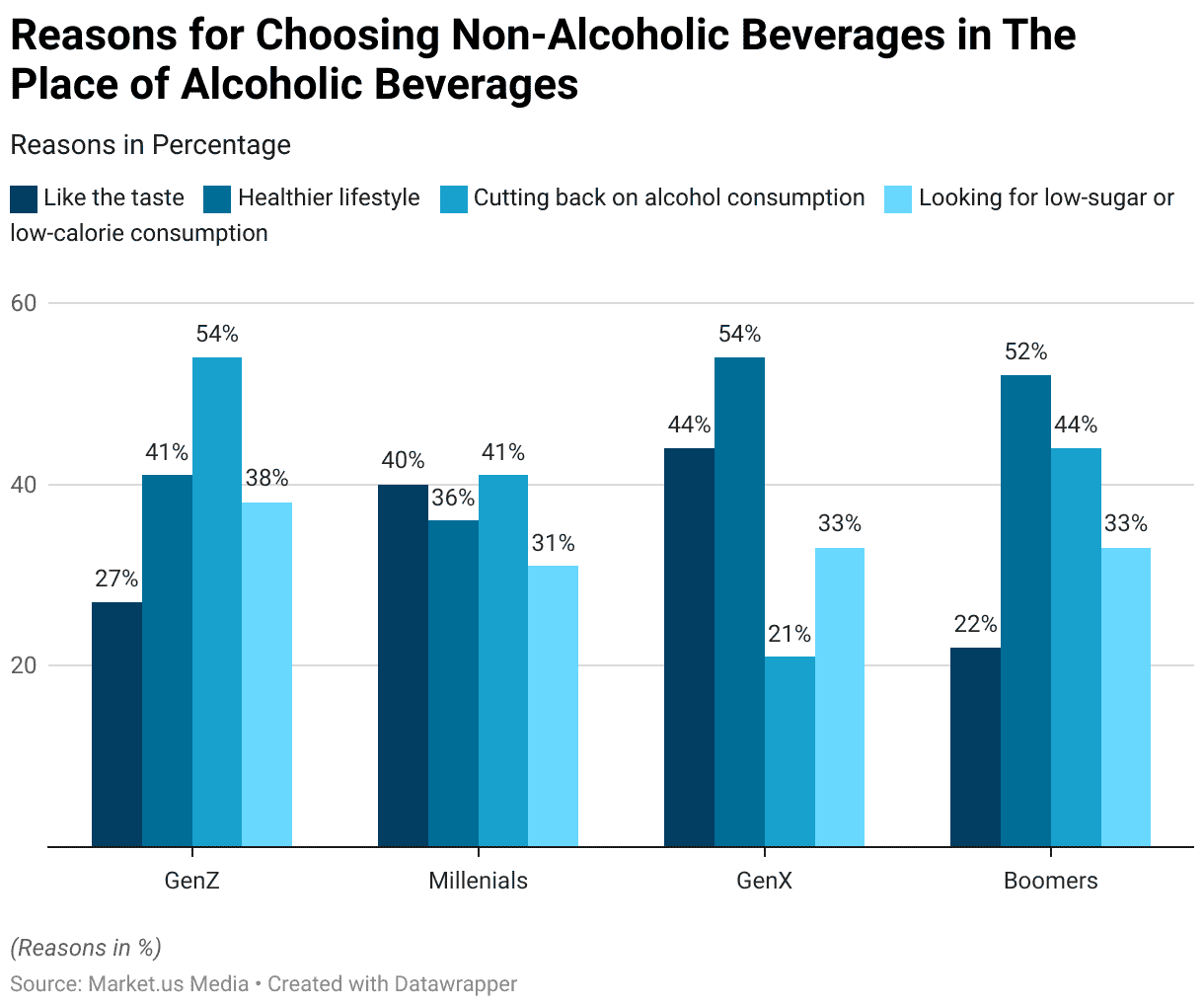
Government Initiatives for Supporting Non-Alcoholic Beverages
- The Indian government has enacted policies to promote foreign direct investment (FDI) in the food processing industry. These measures allow for 100% FDI through automatic approval, with new companies facing a 15% FDI rate, while existing ones are taxed at 22% plus cess.
- The World Health Organization (WHO) urges alcohol producers and retailers to prioritize no-alcohol and lower-alcohol products in their portfolios to reduce overall alcohol consumption.
- The Department of Health and Social Care (DHSC) has committed to promoting NoLo alternatives to shift public alcohol consumption habits. By 2025, DHSC aims to significantly increase the availability of these products in retail and out-of-home sectors, including pubs, bars, and restaurants.
Discuss your needs with our analyst
Please share your requirements with more details so our analyst can check if they can solve your problem(s)



